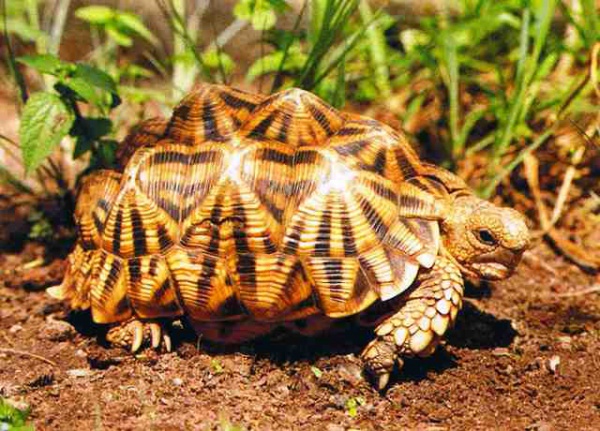Facts About Serrated tortoise
The serrated tortoise, scientifically known as *Psammobates oculifer*, is a captivating species indigenous to the Kalahari Desert in southern Africa. Also referred to as the Kalahari tent tortoise, it is one of three species in the *Psammobates* genus. The name "serrated tortoise" is derived from its distinctive shell pattern, which resembles radiating rays, distinguishing it from other tortoises. Locals in southern Africa often call it the Kalahari tent tortoise due to its habitat in the desert.
This tortoise prospers in the arid savannas and scrubby desert regions of southern Africa, particularly in Botswana, Namibia, and South Africa. However, they are rather rare and dispersed throughout the Kalahari Desert.
Size-wise, the serrated tortoise is relatively small, with a shell length ranging from 12 to 15 centimeters. The shell is low and dome-shaped, featuring prominent serrations along the front and back edges. Each scute on the shell exhibits a striking star pattern of black rays against a tan background. Male serrated tortoises possess a few distinguishing characteristics, such as a longer tail, taller conical scutes on their back, and a concave plastron. Females typically lay a modest clutch of 1-2 eggs in December.
Historically, the San people utilized tortoise shells, including those of the serrated tortoise, for various purposes. However, due to conservation laws aimed at protecting this dwindling species, such practices are now regulated. The serrated tortoise primarily consumes specific succulents and other plant species native to the Kalahari, which makes it challenging to maintain in captivity. Unfortunately, illegal collection for the pet trade remains a significant threat to their survival.

 Burkina Faso
Burkina Faso